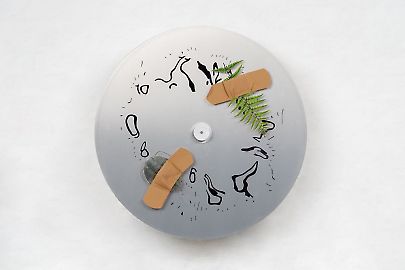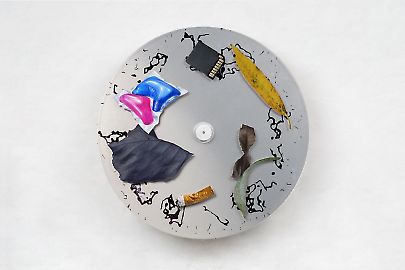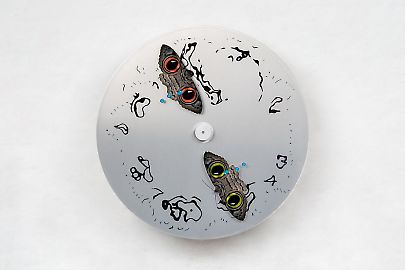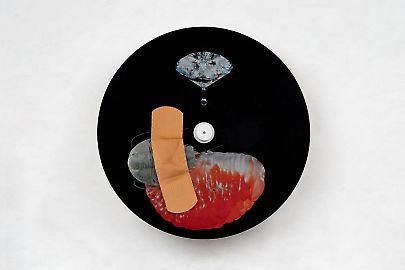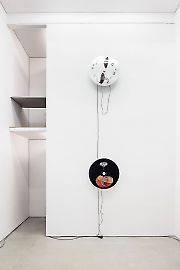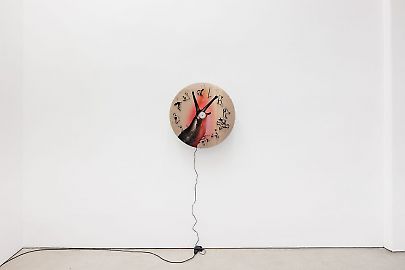Agnieszka Polska -- Dreaming Clocks
It is 90 seconds to midnight on the Doomsday Clock - in the past years, filled with dramatic social, political and environmental changes, everyone’s attention was directed to the well-known indicator of humanity’s vulnerability to catastrophe. Founded by Albert Einstein in 1945, the Doomsday Clock inevitably moves its hands closer to midnight every year.
It is a potent metaphor, but of course the actual state of the planet cannot be measured by one linear time. As revolutionary XX-century historian Fernand Braudel noticed, the idea of unified time is a social construct, and the world is a complex set of structures evolving at various speeds. Each system, structure, social group, human or non-human entity has its own time and pace, entangled into a one world of different time-scales.
The Braudel’s Clocks is a body of work that consists of a series of digital prints, set into a movement resembling that of the hands of a common clock. The objects consist of round layers of Chromalux brushed metal prints on aluminum and semi-transparent UV-prints on acrylic glass, joined together by a clock mechanism. Each layer moves at a different speed - measuring seconds, minutes or hours, sometimes counterclockwise. The layers depict motifs related to technological phenomena, human and non-human imageries, micro- and macro- universes.
Agnieszka Polska


